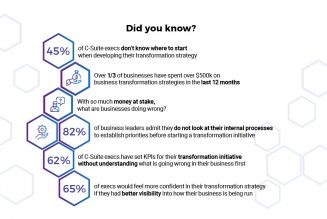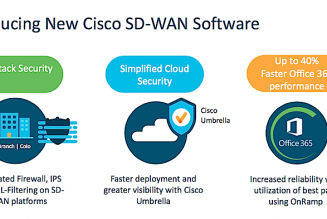One of the most valuable contributions that data and data analytics have made to modern businesses is the ability that they offer to understand customers, engage meaningfully with them, and offer them the type of positive experience that keeps them coming back for more.
But for all the value that data presents in terms of enhancing the customer experience, it also creates a significant risk for the business that doesn’t understand how to apply it to best effect when creating customer experiences.
More often than not, that risk is manifested in organisations that suffer a misperception that customer experience (CX) is something that you ‘do’ for your customer. These businesses typically understand CX to be little more than one of the steps that form part of the overall sales value chain.
Unfortunately, when you practice CX in this way, you set yourself up to fail in terms of consistently delighting your customers. More than that, you risk doing your brand a gross disservice by gradually eroding whatever equity you may have built up in it in the past.
That’s because the customer experience should never be relegated to a bolt-on aspect of your business; it needs to be at the heart of the business strategy. For all its merits, digitisation almost encourages this type of add-on CX approach or, at least, makes it easy to adopt.
But business owners need to guard against taking this ‘easy’ route and falling into the trap of CX that is little more than window dressing and, instead, ensure that CX thinking is core to everything they do, and offer. There are four key paradigm shifts that businesses need to make to unlock the full potential of CX and transform the way they deal with, and appeal to, their customers.
- Don’t sell products or services, provide solutions. Increasingly, customers are looking for businesses to be much more than product or service suppliers. They need the companies they support to partner with them in solving for the problems they are faced with on a day-to-day basis. As the world becomes more complex, and those customer problems or challenges become less simple, businesses can only remain successful if they solve those problems for their customers, rather than merely selling them products that are the building blocks they need to solve their challenges themselves. This mindset shift is a key element of successful customer experience, because making the shift transforms the way a business thinks from ‘what we offer’ to ‘how we offer it’.
- Stop thinking price and start thinking value. Economic cycles come and go. And while pricing may be a significant consideration during times of financial difficulty, trying to build a sustainable business on price competitiveness alone is a futile endeavor. The digital business environment has had the effect of commoditising most products, so competing on price is not a sustainable advantage. Delivering and enhancing customer value, on the other hand, is a far more sustainable approach. In fact, one could argue that, for a growing proportion of customers today, what you charge is far less of a consideration (within reason, of course), than is the shared value that you deliver to the customer and society, through your business and its offering.
- Move from physical positioning to accessibility thinking. To a large extent, digitisation has allowed for a shift to take place from physical consumption to online purchasing. This means that most customers are doing their shopping online – or, at least, starting the buying process there. So, with very few exceptions, the business that wants to stay in business has to move with this shift and focus less on its physical store and more on ensuring its accessibility through an online presence. That said, there is more to accessibility than just setting up a website. Many businesses fail to improve on their physical sales via a digital presence, simply because that presence is ill conceived, inaccessible, and doesn’t offer a seamless and pleasing customer experience.
- Don’t promote, educate. If your business is truly moving beyond selling to solving, then a key part of that strategic shift needs to come through in a change in the way you market. While there’s nothing wrong with good advertising and marketing, one of the best ways to elevate your brand in the minds of customers and prospects is to add value-adding education into your marketing mix. Be warned, however: customers can see through any attempt to disguise promotion as education. What is needed is consumer education that comes from a real understanding of the problems your customers need you to solve for them, and a genuine desire to do so.
The first step towards building a business strategy on these four CX pillars, is to fully embrace the simple truth that digitisation is not customer experience. Neither is data or data analytics. All of these elements of the modern, tech-enabled business are simply the means towards an end. And if that end is a business strategy built on a core value proposition of consistently outstanding customer experience, then your business will be able to fully leverage data, digital and customer experience for maximum shared value and optimal business growth.
By Prof. Yudhvir Seetharam: Head of Analytics, Insights and Research at FNB Commercial








